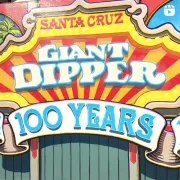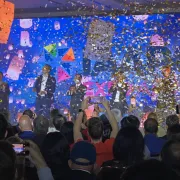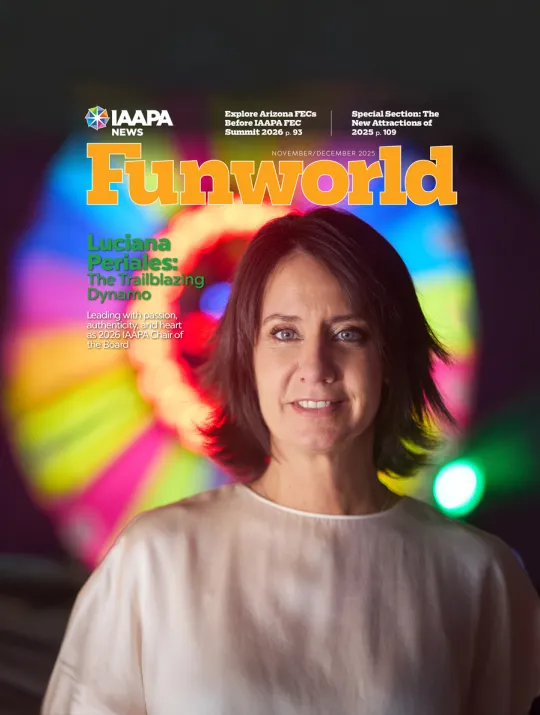Tour button
The Vanguard of Asia, Luke Riley
Village Roadshow Theme Parks’ Luke Riley shares his thoughts on the state of the industry and developments in Asia.

Luke Riley, ICAE, chief commercial officer for Village Roadshow Theme Parks Asia, sits down exclusively with IAAPA News Hub to talk about economic impact, the global attractions industry, and the Asia-Pacific region, as well as the inherent challenges of developing large-scale tourism projects.
Riley also serves as chairman of the IAAPA Asia Pacific Advisory Committee and as a member of the IAAPA Board of Directors and IAAPA Executive Finance Committee.
IAAPA News Hub: Can you share with us your framework for the “five rings” of investment, employment, tax, tourism, and talented new residents? How does this fit with the level of economic impact that governments in Asia seek when looking to green light large-scale tourism projects?
Luke Riley: I like to think of the government’s main objectives as five rings with the rings radiating outward in the economy like concentric circles in a pond. At the very center, you have the project investment, which is the catalyst; in turn, this creates new employment opportunities within the region, which then generates new tax revenue to reinvest in infrastructure like roads, rail, and public facilities. These first three rings are the foundation of all prudent development approvals.
The fourth ring is tourism, which is what our industry is best known to deliver on, inclusive of the associated multiplier effects on regional transportation and hospitality. The highest order objective, though, which is rarely attained, is the attraction of talented new residents to the region. This can only be achieved through establishing multiple new industries at the same time like theme parks, studios, resorts, and dinner shows. This creates an economic ripple effect across the region.
IAAPA: As a respected advocate of the attractions industry globally, can you share more about your passion for the industry and what makes attractions so special?
Riley: It’s the stardust, the wonder, and delight we witness on our guests’ faces that sets our industry apart from any other. We’re all so incredibly fortunate to work in an industry that exists primarily to create fun and lasting memories. We’re a diverse blend of operators, manufacturers, designers, engineers, and contractors with IAAPA at our core.
IAAPA Expos are the hub of our industry where visionary designers and engineers showcase their most advanced technologies to industry insiders.
We’re witnessing the strongest sustainable growth in the Asia-Pacific region, with projects like Lionsgate Entertainment World, Shanghai Disney Resort, Universal Beijing Resort, and more in development. Based on IAAPA’s rigorous research, we’re going to continue to see sustainable growth in the region as per capita expenditure continues on this trajectory, a rising tide lifts all boats. When investing in the Asia-Pacific region, fortune favors the bold.”
IAAPA: Based in Asia since the early 2000s and fluent in Mandarin, you’ve also been working in the background to advance regional standards in design, engineering, construction, and operational safety for the betterment of the attractions industry. What are some of the challenges you’ve faced when developing large-scale tourism projects?
Riley: There’s something called the planning fallacy, which is a tendency by the layperson to underestimate the true amount of time required to deliver a best in class project. A renowned example of this is the Sydney Opera House. The project was initially slated for completion in 1963 and ended up finishing a decade behind schedule in 1973. This project now serves as a cautionary tale.
Comparatively speaking, it’s straightforward to summarize in a sentence or two what takes the span of several years—from the feasibility study, to master planning, concept and schematic design, design development and construction drawings, tendering and procurement, program and construction management, to preopening and operations. However, the sheer level of detail behind each one of these tasks requires input from the subject-matter expertise and shared body-of-knowledge across the many, many vendors in our industry.
That’s why it’s so important to take the necessary time up front to plan, as well as allowing sufficient time for unavoidable variations and change orders in the work program. This is the true power of the IAAPA collective. Our Village Roadshow CEO, Clark Kirby, often says to us “you need to take time but not lose time,” which is some of the best all-round development advice you’ll ever hear!
Follow IAAPA for news and event announcements in your favorite social media apps
Connect with the Real Stories Behind the Fun
Follow our social media for authentic stories, special moments, and behind-the-scenes looks from the attractions world.












 The Official Magazine of IAAPA
The Official Magazine of IAAPA